Drama. If you have a daughter in middle school -- or teach, coach, counsel, or are in any way involved with tweens -- you've heard this word repeatedly: it's the catchall term girls use to describe their lives. After extensive, in-depth interviews with over 50 girls, what Haley Kilpatrick and I found for our new book The Drama Years: Real Girls Talk About Surviving Middle School -- Bullies, Brands, Body Image, and More is that kids use it as a kind of stand-in term for feeling stressed out and under pressure.
And they're experiencing both. Friendship catastrophes, sexual stirrings, higher academic stakes, Facebook bullying and textual harassment... As much as your middle schooler might chatter on about her day, she's no longer telling you everything (even if you think she is). Instead, she's relying on her new major influencer: her friends.
So, here's a way to better understand your daughter's drama: read her fiction. "It's when we read fiction that we have the time and opportunity to think deeply about the feelings of others, really imagining the shape and flavor of alternate worlds of experience," writes Anne Kreamer in a piece for the Harvard Business Review , and that's exactly what I'm prescribing here. You might feel like your daughter is hyper-sensitive, is blowing things out of proportion, or has become strangely secretive; read middle grade and YA books -- those written for middle school girls and from their points of view -- and you'll have more empathy for your daughter's experience.
These seven novels cover key issues that came up over and over for the girls we interviewed in The Drama Years. Read them alone, or with your daughter; and (hopefully) they'll help you both make life a little less dramatic.
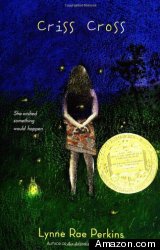 1. FINDING HERSELF: Criss Cross by Lynne Rae Perkins
1. FINDING HERSELF: Criss Cross by Lynne Rae Perkins
One of the subtle, sometimes-subconscious constants throughout middle school is the ongoing personality questioning: Who am I? Who do I want to be? Is this outfit "me"? This iTunes download? These notebooks/pens/iPhone game? In a time when they're trying to figure out who they are, anything, large or small, can become an identity signifier for a tween. And so much of this process has to do with their close friends and peer groups: during the reporting for The Drama Years, we found that girls often define their own sense of self through others' eyes. Their definition of "self-esteem" has more to do with how others see them than how they view themselves.
Criss Cross, a gorgeous novel that won the 2006 Newbery Medal, deals with these themes of adolescent self-discovery, albeit in a kind of dreamy, meandering way. It's 1969 or thereabouts, and Debbie, just barely a teenager in a suburban town called Seldem, wishes something - anything -- would happen. Criss Cross weaves together Debbie's story with her friends' (Patty, Hector, Lenny and Phil) and while nothing incredibly dramatic happens, it's the very real portrayal of pre-teen and teen questioning of identities and their places in the world that makes this novel such a lovely guide for parents, and a reminder of what it was like to start to seriously grapple with the Big Questions.
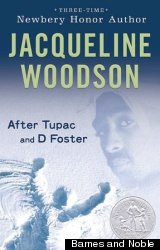 2. WANTING FREEDOM, CRAVING STABILITY: After Tupac and D Foster by Jacqueline Woodson
2. WANTING FREEDOM, CRAVING STABILITY: After Tupac and D Foster by Jacqueline Woodson
Tweens are dealing with a perfect storm of biological, social and emotional changes, and throughout, they're stuck in the middle, literally: they're not coddled like they were in elementary school, but they don't have the (relative) freedom of high school, of cars and part-time jobs and those first real relationships. There's often a feeling of being trapped by one's age -- that in-between state when you feel like both a kid and an adult (but there's no doubt at which table you'd rather sit during holidays).
The two protagonists in After Tupac and D Foster, 11-year-old Neeka and her best friend, are cursed with overly-involved parents and often feel confined by their lives - something many middle school girls can relate to. They're jealous of the new girl in their Queens neighborhood, D, a foster kid who freely roams around the city, and who loves Tupac Shakur as much as they do. As the three girls' friendship deepens, After Tupac and D Foster deftly explores the competing desires for freedom and stability that characterizes this time for girls.
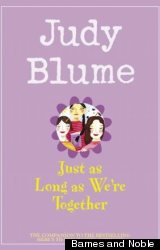 3. FRIENDSHIP ISSUES: Just as Long as We're Together by Judy Blume
3. FRIENDSHIP ISSUES: Just as Long as We're Together by Judy Blume
I would suggest reading the entire Judy Blume oeuvre, as each of her books deals directly with middle school/high school drama, but we've already covered the genius of the penultimate middle grade/YA novelist. (Still: read them all, or -- more likely -- re-read them. Even now, there's no book like Blubber that gets at the chilling ways girls can devastate one another - and it was published in 1974, way before the cyberbullying days.)
Just as Long as We're Together isn't her best work, but it's still classic Blume, which means she expertly channeled a 12-year-old girl in her portrayal of protagonist Stephanie Hirsch. Stephanie's not dealing so well with the fact that she and her bestie Rachel Robinson are growing apart. Will they stay friends forever, or is it time to break up? Girls' friendships at this age are intense, and breakups -- often precipitated by the natural personality-evolution process, which girls interpret as being left behind ("She changed!") -- are a universal and piercingly painful situation for girls. For any adult who's asked "Why can't you just get new friends?" or "Why don't you just make up?," Just as Long as We're Together can help you understand why those are both clueless-parent questions.
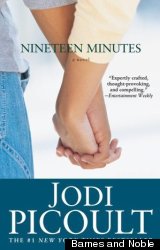 4. BULLYING: Nineteen Minutes by Jodi Picoult
4. BULLYING: Nineteen Minutes by Jodi Picoult
The one grown-up book in the bunch, Nineteen Minutes by blockbuster bestselling author Jodi Picoult takes on the very real issue of extreme bullying and school shootings. Okay, so it's about high school instead of middle school, and the bullying that characterizes tween girls' experience ("My parents won't ever be in my shoes, walking through the hallway and being called ugly," 12-year-old Emma in New Jersey told us for The Drama Years) isn't the same as what Picoult so expertly explores here. But still, it's a scintillating thriller that takes a one-note media narrative -- the bullied kid as school shooter -- and looks at it from all points of view, while bringing home the soul-crushing humiliation of dealing with never-ending teasing and torment at school. For any parent who hasn't yet seen the mesmerizing Weinstein Co. documentary "Bully" and doubts the power of daily ridicule, Nineteen Minutes can bring it into complicated, nuanced relief.
 5. CRUSHES: The Comeback Season by Jennifer E. Smith
5. CRUSHES: The Comeback Season by Jennifer E. Smith
Fourteen-year-old Ryan isn't a tomboy, but "she isn't anything else either": "Most often," Smith writes, "Ryan finds herself drifting though hallways filled with kids her own age who seem years ahead of her in every way." Her two childhood best friends, Sydney and Kate, have moved on to a Ryan-less clique; and ever since Ryan's father passed away, they haven't been too sure how to deal with her. The place where Ryan feels most at ease, and most connected to her father, is at Wrigley Field. There, she meets another obsessive Cubs fan: Nick, the cute new guy at school.
Jennifer E. Smith is one of our best YA novelists, and while she often writes about first love, her characters usually find their way to one another through the sticky cobwebs of scary Major Issues like divorce and death. It lends a bittersweet realism to her characters' connections and gives parents more than one reason to seek out her work. Read The Comeback Season not only for its portrayal of first love -- that best guy friend/maybe-boyfriend gray area -- but also for the way Smith tackles friendship breakups, how tweens and teens come to understand family loss, and how it feels to be the understated girl in a school full of brightly-colored evolving personalities.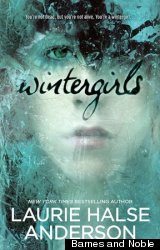 6. BODY IMAGE/DISORDERED EATING: Wintergirls by Laurie Halse Anderson
6. BODY IMAGE/DISORDERED EATING: Wintergirls by Laurie Halse Anderson
The Drama Years tackled everyday issues, the complexities that underlie your "How was your day today?" conversations with your middle schooler. We based its content on the experiences of the girls we interviewed, and none of the girls in our community disclosed severe body image issues. Instead, they talked about the very real day-to-day ways that body image impacts their lives: what it feels like to have your developing body become a topic of conversation or teasing at school; why girls are suddenly clustering in front of the bathroom mirror at school, listing the reasons why they don't like how they look; the pressure to be pretty for their friends, cute for their parents and teachers, and hot for boys; what it feels like when a mom's discomfort with her body is apparent to her daughter.
But in a world where pretty means skinny and pretty is everything, where countless magazine coverlines and reality TV shows are dedicated to weight loss and the ways your life will completely, utterly, miraculously change for the better, if you just get rid of those last 10 pounds/your muffin top/cellulite -- it can only help adults to know how far down a rabbit hole those pressures can take you.
And that's where Wintergirls comes in. Written by award-winning YA novelist Laurie Halse Anderson, Wintergirls is the story of Lia and Cassie, who make a chilling pact to be the skinniest girls in their school. It's an extreme story, to be sure -- but for any adult who wants to better understand the mind of a girl suffering from eating disorders, Wintergirls is the place to start.
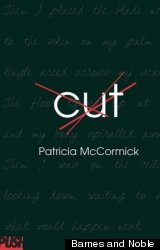 7. DEPRESSION AND SELF-HARM: Cut by Patricia McCormick
7. DEPRESSION AND SELF-HARM: Cut by Patricia McCormick
When we set out to write The Drama Years, we weren't sure what Serious Issues the girls in our community would discuss, but in the end, those conversations covered two areas: divorce and depression/self-harm.
Self-harm can seem like a bigger mystery than anorexia, bulimia, addiction or other self-destructive behavior: why would anyone purposefully hurt -- cut/brand/burn/puncture -- herself? And why is it a behavior that seems to impact more young girls than boys? (I was shocked at the number of girls interviewed for The Drama Years who knew cutters at their school, but according to sociologists Patricia and Peter Adler, authors of The Tender Cut: Inside the Hidden World of Self-Injury, cutting and other forms of self-harm are on the rise among tweens and teens -- and they're no longer necessarily seen as a precursor to further action, but a coping mechanism for internal pain.)
Like Wintergirls, Patricia McCormick's Cut is a similarly extreme story - the protagonist, Callie, is in a residential treatment center for cutting -- but her experience can be a helpful way for adults to start to understand self-harm and the drive to cut.
For more from Bookish, click here!